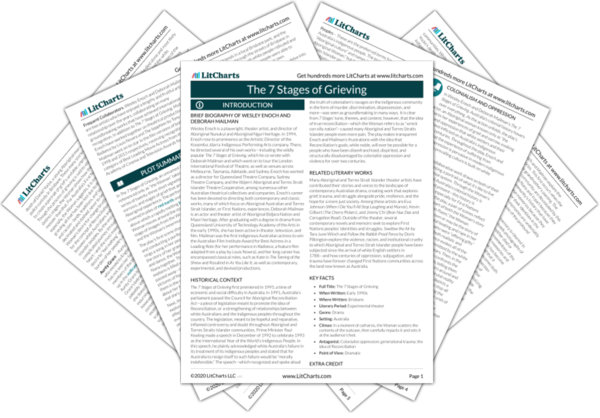The Woman knows that while the loss of her grandmother is personal, it is also much larger than that—with each elderly member of the community who dies, some of the old stories and traditions die with them. The Woman’s grief, then, is not just for herself and her family—it is for her people and the entire Aboriginal and Torres Strait Islander communities, whose histories are being eroded. This is yet another instance in which the Woman’s individual grief is disorganized or disordered by her larger existential grief for the losses her people have suffered over the years.
